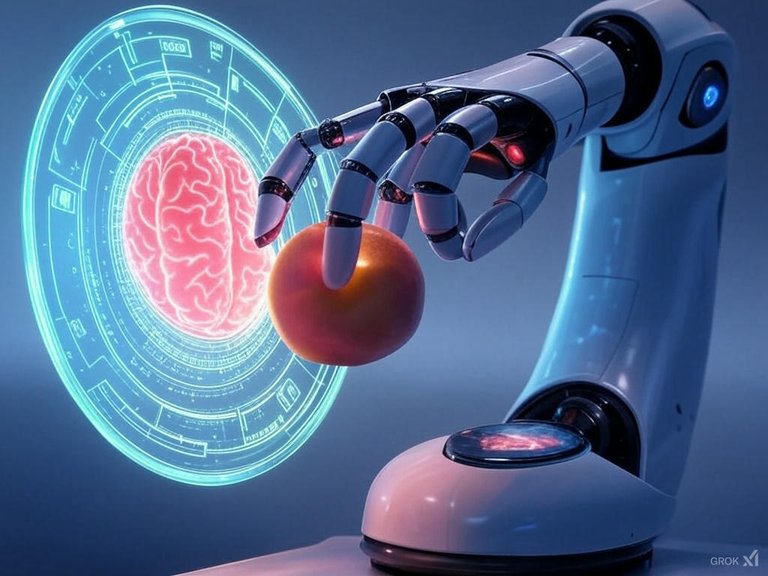
According to research published on February 18, Magma surpasses the capabilities of traditional multimodal systems by integrating verbal intelligence (semantic understanding) with spatial-temporal intelligence (motion planning in 2D/3D). This allows the model to both interpret complex textual commands and execute sequences of actions—from clicking buttons in a user interface to manipulating objects with robotic arms. The key innovation of Magma lies in unifying three critical competencies within a single model:
Multimodal perception - simultaneous processing of video streams, sensory data from robots, and text.
Hierarchical planning - breaking down complex tasks into action sequences (e.g., "make coffee" → "pick up the mug" → "pour water").
Execution in the environment - transforming abstract commands into specific movements in space (e.g., mouse click coordinates or robotic gripper trajectories).
Unlike previous solutions like Google’s PALM-E or OpenAI’s Operator, Magma eliminates the need for separate models for perception and control. Experiments on the Mind2Web dataset demonstrated that the model achieved 89.7% accuracy in UI navigation tasks, outperforming specialized systems by 12.3%.
The core of Magma’s action capabilities lies in two proprietary data annotation techniques:
Set-of-Mark (SoM) - labeling interactive elements in images (e.g., buttons in a GUI or cabinet handles for a robot) with digital markers. This enables the model to map textual commands to specific pixel coordinates.
Trace-of-Mark (ToM) - tracking object trajectories in video clips (e.g., human or robot hand movements). This allows Magma to predict action outcomes and plan motion sequences.
During pre-training on 39 million samples (including 2.7 million UI screenshots and 970,000 robotic trajectories), the model gains the ability to generalize—principles learned in digital environments (e.g., an "OK" button in a dialog box) translate to manipulating physical objects. Magma revolutionizes software interaction through:
Contextual UI navigation - the model analyzes an application’s structure (e.g., Photoshop menus) and executes complex workflows (e.g., sharpen an image and export it to PDF).
Adaptation to dynamic changes - unlike rigid RPA scripts, Magma adjusts to interface updates by understanding the semantics of elements.
And it does so effectively. This isn’t just theory—Microsoft’s robotic brain performs exceptionally well in practice too.
In tests on the Airbnb mobile app, the model automated the booking process with 94% accuracy, surpassing specialized tools like UiPath. In the physical domain, Magma excels at manipulating soft objects (experiments with grasping juicy fruits showed 78% success vs. 62% for OpenVLA), 3D motion planning (the algorithm generates trajectories accounting for manipulator dynamics, such as arm inertia), and human-robot collaboration (the model interprets voice commands like “hand me the wrench” and adjusts grip strength to the context).
In LIBERO environment simulations for warehouse logistics, Magma achieved an 82% success rate in picking tasks, reducing robot training time by 70% compared to traditional programming.
Microsoft Magma is currently one-of-a-kind, setting a new paradigm in integrating AI with the physical and digital worlds. By combining precise perception, adaptive planning, and safe execution, the model paves the way for applications in enterprise automation, personal robotics, and next-generation AI assistants.
Challenges remain in scaling to millions of IoT devices and ensuring the transparency of the model’s decisions. By 2026, Magma is expected to integrate with the Azure ecosystem, potentially revolutionizing industries from manufacturing to healthcare—assuming everything goes according to plan.
How does Microsoft Magma work?
Unlike two-tower architectures, Magma uses a shared embedding space for all modalities, reducing latency by 40%. Key stages of the model’s training include:
Multimodal pre-training - 25 million video clips from Epic-Kitchens and Ego4D, enriched with SoM/ToM annotations.
Task-specific fine-tuning - 390,000 robotics samples (Open-X-Embodiment) and 650,000 UI interactions (Mind2Web).
RLHF optimization - human evaluations of action quality in Microsoft’s Genesis simulation environment.
Results show that SoM improves object localization accuracy by 19%, while ToM enhances motion trajectory planning by 28%.
Posted Using INLEO